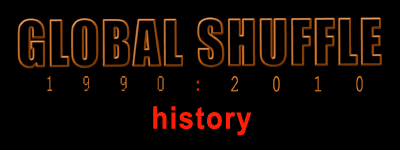
22.07.2011 – TECH FAULT Please note due to yet Another annoying Google formatting stuff up, images may not display correctly. We are correcting the code by hand, thank you for your patience. 24.07.2011 It appears there’s some formatting artifact from youtube when trialing their new iframe structure – NB It didn’t work ! 13.12.2011 Ok, the slide show is kinda nice…grumblegrumble…but don’t let it happen again grrr!
More than 800 years ago Welsh seamen danced on the wooden 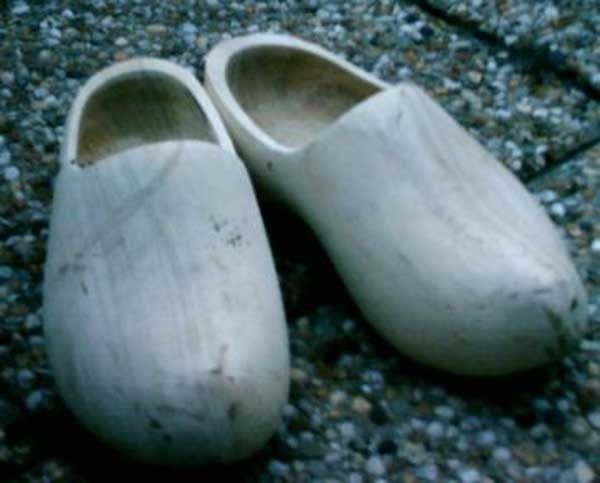 hulls and decks of their boats in wooden clogs, and Clogging was born. In traditional Celtic language Clog means 'time' as well as a lump of wood.
hulls and decks of their boats in wooden clogs, and Clogging was born. In traditional Celtic language Clog means 'time' as well as a lump of wood.
'Time' as in keeping in time with the music when dancing. The clogs were the percussion / drum section.
The KLOG sound wooden shoes make against wooden floors give them the name. The same as Kloppen is the name for clogs in Dutch. The rest of the music usually provided by pipes, banjo's and later fiddles (violins) and guitars. All portable instruments, no pianos, pipe organs, or large floor standing harps. Small lap size ones Celtic Harps.
They weren't the biggest of boats, so it was a confined style. Just a few paces if that. Not much room to fling your arms around without hitting someone or something, or loosing your balance on a rocking boat, so you kept them mostly at your sides.
Simple enough for a baby to start learning, with a stomping foot, and complex enough to keep you interested in dancing it for the rest of your life.
It's from here the Melbourne Shuffle inherited it's core basic steps.
The Clog dance quickly became a favorite from sea port bars to village fairs where they'd construct temporary wooden dance floors for clogging. And that's pretty much where you'll find it still practiced today many centuries later.
Clog dancing is also known as Step dance, Irish dance and Stomping, which is what the oldskool Melbourne Shufflers called themselves - Stompers. 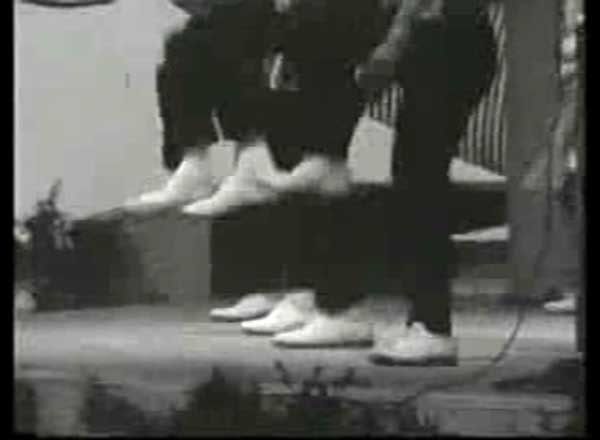
Clogging, or Stomping as it was called locally, was the standard dance style in Melbourne for much of the 1960's to 1980's as traditional folk dance became popular in the folk revival years.
Melbourne has a very large Celtic population. Much of the population were forced out of their home countries by the Scottish Highland clearances of the mid 1800’s. Wealthy landowners in Scotland could make more money from grazing sheep and selling the wool to the new industrial revolution’s knitting mills, than renting ancestral land back to the Scots. Scots were staved of food and their homes burnt down in the forced immigration to Melbourne – including others such as San Francisco, New York and Canada. Other Celts came from Ireland around the same time also as forced immigrants starved out of Ireland in the potato famine years.
Wearing culturally identifiable clothing (tartan etc) performing culturally identifiable dance, music and speaking your native tongue, Gaelic, were outlawed for decades by the English crown in an attempt of cultural genocide against the Celts. Mid 1800’s they were also actively doing the same to India, China and pretty much every other country they set foot in forcing the world to speak English and be British.
So with the forced immigration of Celts to Melbourne, came a fierce independence and pride in their banned culture, with a renewed determination to never let it die, even to this day.
Fortunate for the new arrivals, gold was discovered in the near by hills of Melbourne and a gold rush spanning 50 years began, with Melbourne becoming the richest city in the British Empire outside of London.
Queen Victoria was not amused with these people she had sent to the end of the earth as being less value than sheep, suddenly striking 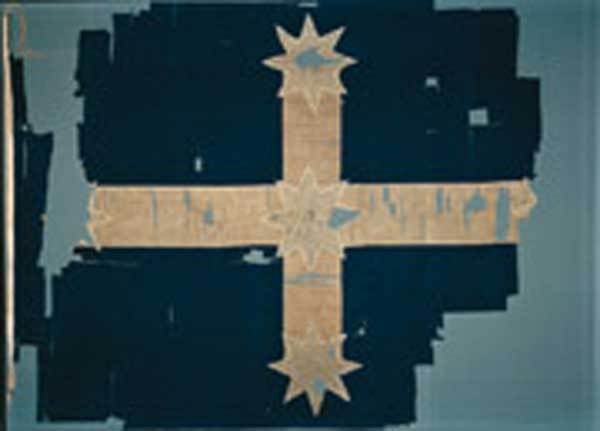 gold. People who in their own ancestral lands were denied the vote and forced into factories as child labor in the new urban slave class. So the Queen imposed heavy taxes at the point of a gun by her soldiers, on miners in Melbourne , often twice a day.
gold. People who in their own ancestral lands were denied the vote and forced into factories as child labor in the new urban slave class. So the Queen imposed heavy taxes at the point of a gun by her soldiers, on miners in Melbourne , often twice a day.
This lead to an armed rebellion against the British crown and the movement to make Melbourne independent, 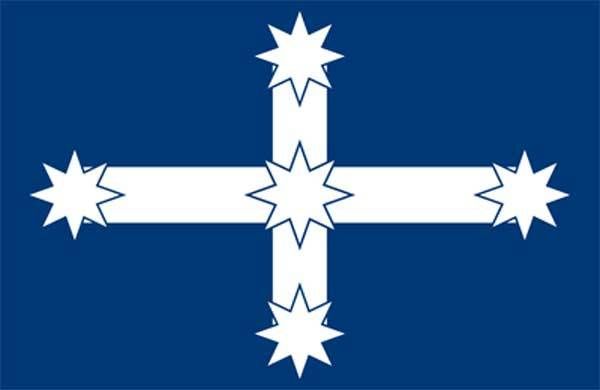 even creating a new flag based on the navy blue and white cross of the Scottish flag (Saint Andrew's Cross) and a star constellation only visible in the Southern Hemisphere, The Southern Cross (Pics above and right the original surviving flag, and complete design)
even creating a new flag based on the navy blue and white cross of the Scottish flag (Saint Andrew's Cross) and a star constellation only visible in the Southern Hemisphere, The Southern Cross (Pics above and right the original surviving flag, and complete design)

In 1901 Melbourne became the first capital city of the new country called Australia. The southern cross is now on the Australian flag, so too is the British Union Jack which many Australian's, especially in Melbourne, see as the flag of the oppressor and would still like to see removed when Australia becomes a republic – one day.
My personal 'cultural heritage' as we call it in Melbourne, where today we have over 200 languages spoken daily, comes from 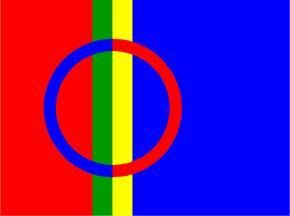 Norway and Sweden on my dad's side. My grandmother was born in Bergen Norway from a northern Sweden Sami family (Sami Flag right) Sami language (Saami), and Sami song-chants, called yoiks, were illegal in Norway from 1773 until 1958. She married a Norwegian Sami born on the Isle of Skye, who’s family were forced out in the 19th century clearances and they moved to Melbourne when their family lands in Norway were given to missionary settlers early 1900’s. My grandfather expressing horror when arriving in Melbourne that “…you people live by the ocean and you don’t teach your children to swim ? You would be called negligent in Sami culture !” He then set up a learn-to-swim class in town sponsored by the Herald Sun newspaper for school kids to get their ‘Herald’ certificate, demonstrating you could swim 25 yards unaided in open water.
Norway and Sweden on my dad's side. My grandmother was born in Bergen Norway from a northern Sweden Sami family (Sami Flag right) Sami language (Saami), and Sami song-chants, called yoiks, were illegal in Norway from 1773 until 1958. She married a Norwegian Sami born on the Isle of Skye, who’s family were forced out in the 19th century clearances and they moved to Melbourne when their family lands in Norway were given to missionary settlers early 1900’s. My grandfather expressing horror when arriving in Melbourne that “…you people live by the ocean and you don’t teach your children to swim ? You would be called negligent in Sami culture !” He then set up a learn-to-swim class in town sponsored by the Herald Sun newspaper for school kids to get their ‘Herald’ certificate, demonstrating you could swim 25 yards unaided in open water.
My mum's side, my great grandmother an Irish Catholic/Sami and great grandfather a Scot Protestant. Both families were involved in the fashion industry mostly bespoke and retail. My grand father quite the dresser apparently, my mother still has his 1890’s swagger stick, typically used for a stroll around town – or doing the block as it was called in Melbourne. They couldn't live legally as husband and wife in either country, so they came to Melbourne where they could. Both families arriving from around the 1880/90's.
I learned to play piano on the family piano handed down to me from my mothers side. My grand father told me he and my grand mother ‘courted’ on the same double seated bench piano stool I’d learned to play on. I was in my late 20’s when he told me, and to tell you the truth, I’ve felt a little awkward about sitting on it ever since …but both the piano (in need of repairs, I’m a piano builder/tuner) and the stool are still cherished.
The music of Global Shuffle was composed on that same well worn piano, then recorded with synths. The solo flute, reed pipe and warble sounds come from Sami Yoiks my grand parents and father sang to me as a child. Banned for 200 years in Norway until 1958, when I was 3 years old, suddenly everyone started singing out loud….all the time.
The music always sounded weird to me and still does, but every year or two in winter I need to go down to Cape Schank in Melbourne which faces the southern ocean, stand specifically on the volcanic rocks and feel the salt spray on my face, blown from a wind straight from the south pole…and everythings fine again. I don’t really know why, but that doesn’t seem to bother me. - The north pole skin and small sinus arctic nose on a humid Melbourne summer day, I get ! No further explanation required. :)
Melbourne is a sea port city built on this Yarra river estuary (Pic below 1895) from the 1850's gold rush days. 10,000 new 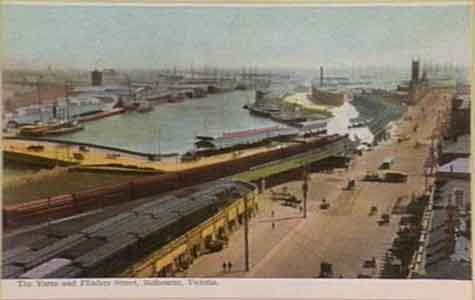 arrivals a day at it's peak. The gold rush boom lasted from 1853 until 1913.
arrivals a day at it's peak. The gold rush boom lasted from 1853 until 1913.
You'd finish your daily chores, had your evening meal, and it was up on deck to relax under the stars.
He writes of the balmy nights on deck with clogging and Highland sword dance to the pipes...with lots of refreshments and 70 young maidens (single girls) being Court Marshaled by the ships Matron, for breaking curfew - again. Preferring of course to stay on deck all night where all the fun was
Not a whole lot had changed in Melbourne 100 years later. In the oldskool Flinders Lane district, where I've spent the past 20 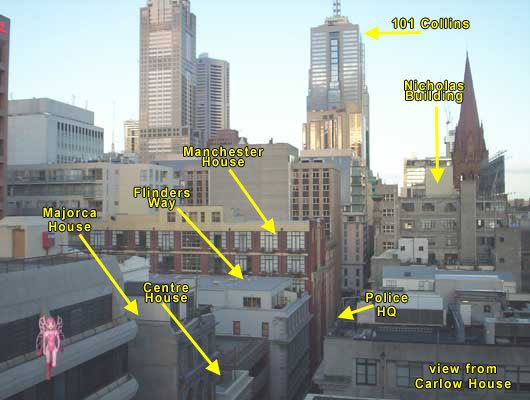 years living in my various studios, we'd do exactly the same at the end of the day. Go up to the roof and relax under the star (yes a joke, the city lights washed out everything else, but we could imagine pretty good) and we'd shuffle on the roofs, often waving to each other like ships passing in the night.
years living in my various studios, we'd do exactly the same at the end of the day. Go up to the roof and relax under the star (yes a joke, the city lights washed out everything else, but we could imagine pretty good) and we'd shuffle on the roofs, often waving to each other like ships passing in the night.
 This is the sort of Melbourne that would have confronted my families (pic left). Flinders Street 1875.
This is the sort of Melbourne that would have confronted my families (pic left). Flinders Street 1875.
This shot looking down Flinders Street shows the Degraves Laneway on the right. It leads directly into Flinders Lane. If you weren't looking for it you'd miss it, a sort of hole in the wall place.
This is Flinders Lane 1875, (Pic Below) it's the back alley to the Flinders Street grand shop fronts. As you can imagine, all the sorts of things that happen in gold rush towns main harbor road back alleys, went on here, and still does.
It was in artists studio parties down this very Lane in the early 1990's that the first oldskool shuffle parties were held.
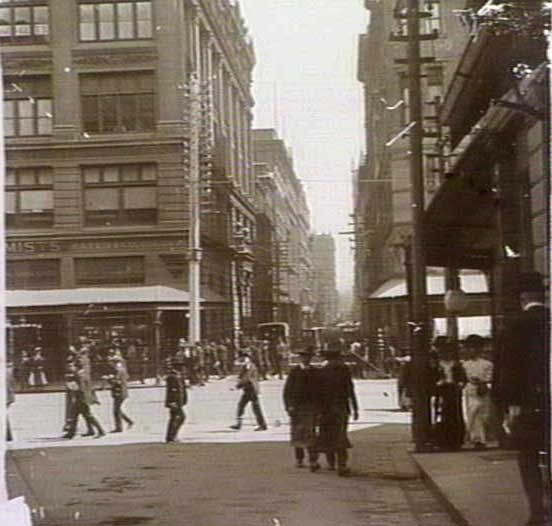
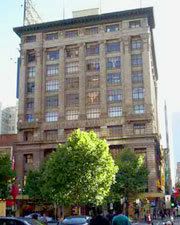
I lived the last 10 years in Flinders Lane in this same building on the corner of Flinders Lane and Swanston street, and like many friends, shuffled on it's roof. The Nicholas Building (Pic left 2004)
The folk revival was quite huge in Melbourne 250,000 turning up to local folk act The Seekers in the early 1960's for instance.
We also had a warm to hot climate and out door parties in the bushland hills of Melbourne were well attended. Most of these hills areas were semi rural, so there were lots of barns, sheep shearing sheds and church halls etc with wooden floors for clogging.

They'd be big family and village social occasions. Barn Dancing, Square Dancing, Irish Dancing or simply 'The Dance' as we'd call it. We'd been holding these dances for 100 years. Just as our ancestors had been doing for centuries.
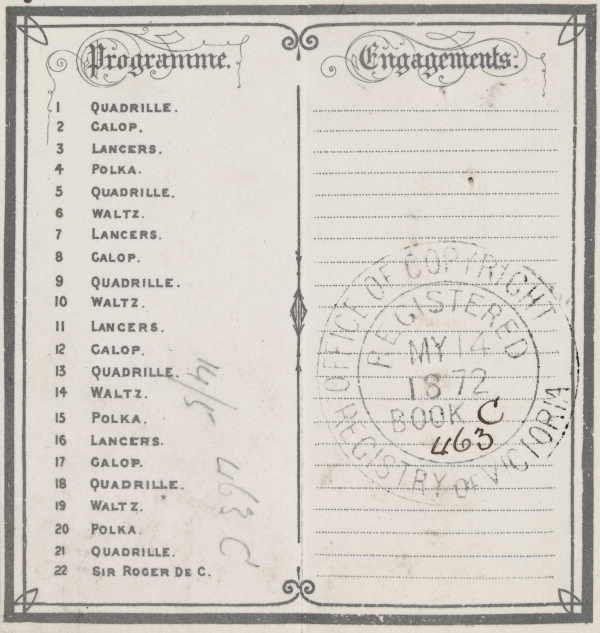
Melbourne 1872 Dance Card copyright registry
The sort of purists who booed Bob Dylan and called him a Judas, when he first used an electric guitar on stage mid 1960's. But they could be a bit of a stick in the mud too. Not permitting any modern cultural elements to be included.
Melbourne Hippies, liked Hendrix feedback type guitars and psychedelic synthesiser sounds Pink Floyd etc. Not on the list of most loved bands for clogging at the time.
But we danced the same clog stomping way, we'd grown up with it, we liked it, but it just wasn't cool enough for us anymore.
So we did the same steps, but in normal shoes, (no wood or metal taps), usually Melbourne made rubber soled Dunlop Volley canvas tennis shoes or bare feet. And called it Stomping.
If ever there was an authentic traditional Melbourne Shuffle shoe to recommend shufflers, it would be this classic, Dunlop Volley 'SANDSHOE' made in Melbourne 1924.
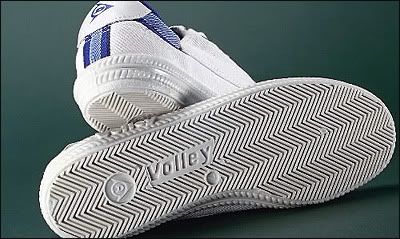
In 1924, The Dunlop Rubber Factories in Melbourne decided to make Sandshoes. This was to compliment their Rubber Boots (Gum Boots) which were first manufactured in 1915.
The sole pattern was inspired by the Dunlop car tyre tread, Dunlop also make car tyres. Dunlop Volley's were first introduced as a tennis shoe in 1939 by tennis player Adrian Quist.
The Dunlop Volley is a classic piece of footwear, basically a rubber soled clog. Strong sturdy cheap. 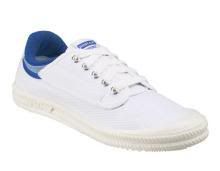 It's broad weave canvass upper allowed your feet to breath on a hot Melbourne summer day, when our beach sand can scorch your feet in 40C heat. You could wear them into the salt water at the beach too. That was a big plus. Apart from bathers and surfies etc, there's lots of recreational water craft in Melbourne, water skiing, yacht clubs, bay fishing, people would go snorkeling in them over shallow water reefs.
It's broad weave canvass upper allowed your feet to breath on a hot Melbourne summer day, when our beach sand can scorch your feet in 40C heat. You could wear them into the salt water at the beach too. That was a big plus. Apart from bathers and surfies etc, there's lots of recreational water craft in Melbourne, water skiing, yacht clubs, bay fishing, people would go snorkeling in them over shallow water reefs.
You'd just wash them out with fresh water after the sea, let them dry overnight, and off you'd go again the next day. Fresh shoes everyday of summer.
They were flat soled for outdoor and indoor tennis courts where healed footwear is banned. The heals dent the court surface, not a good thing for a tennis court.
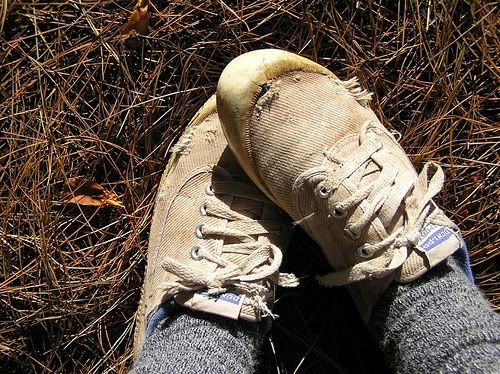
They'd last years, fit sooo comfortably, and you could wear them with bare feet or socks.
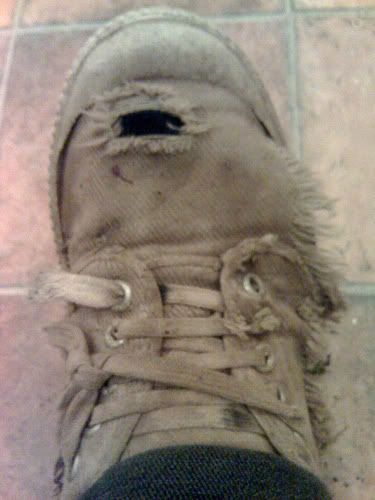
Yes we'd get very attached to our old worn out Volley's. Worn with great pride. So much that owners post pics of them online like these.
And because they were canvas, and we're in Melbourne, that means you've got to paint them too.
Today you can customize your own canvas shuffle shoes with a high top or low cut from msoPHATS online. http://www.msophats.com/
So stomping moved off the wooden floor onto the dirt and ankle deep sand. We like our beaches in Melbourne.
I won a stomping dance competition on the beach when I was 9. It was 1964 and surf music was big. I lived on the beach road, this Beach (Pic below) was my front yard.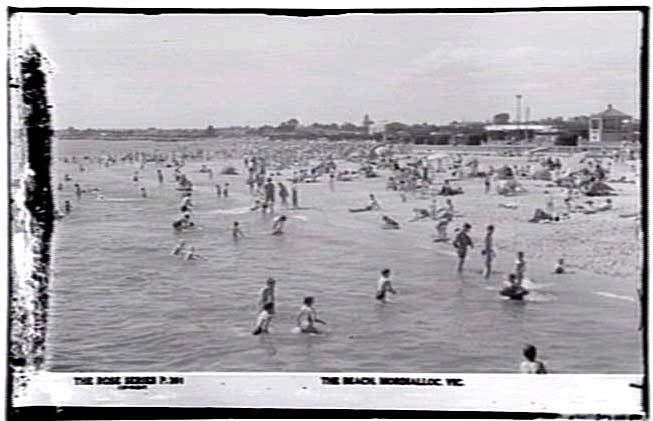
Most of town lived on the beach in summer, so there was the usual summer entertainment for kids. The comp was run by a commercial Melbourne rock radio station. Stomping (The Stomp) was very popular among the Melbourne surfies. There's not a whole lot of ways to move your feet in soft deep Melbourne beach sand, but Stomp !
A simple two step in time with the beat, throw in an occasional kick, spin or trick and you were set.
In the 1970's we simply dropped 'stomp' as a label and called it rock. Not to be confused with 1950's rock couples based dancehall.
I was in the crew running the Upwey Dance in 1975. 1200 sharpies, hippies and suburban kids a month turned up to them at the Upwey High School Hall. They were raves, live acts, dj's, flashing coloured lights, lava lamps, UV and fluro decor, balloons, mirror balls, smoke AND Bubble machines, big stadium sized hall, big sound system, with pinball machine arcade, cloak room and munchies bar.
The Police actually encouraged the dances, telling us that the crime rate went down for our whole region of town the weekends our dances were on.
So we helped the Police set up their own, because we were full to capacity. The Police did the same setting up regular monthly dances called The Blue Light Disco all across Melbourne. They used police blue flashing lights, the local high school kids would do the decor, and the cops were the DJ's...yes seriously.
100,000's of Melbourne high school kids packed out the 'Blue Lights' for a decade. All stomping and rockin to whatever the music was being played.
So when raves hit town, people in Melbourne just kept dancing the same, because it works for so many styles of music, not just different music styles over the decades, but centuries, adding our own cultural spin on it, to pass on to future generations.
Except we Shufflers wore soft soled trainers/runners/gym shoes designed to give grip on polished surfaces. Not the smartest move when you want 'slip'. But the shoes were worn as a fashion statement, not for practicality.
So not to be held back by this fashion-over-design detail, we sprinkled baby talcum powder on the floor to give us some slip. Problem solved, fashion statement preserved, everybody's happy.
All the instantly recognisable shuffle moves are in traditional clogging.
Hardstyle (Stomping), Shuffling (sideways movement by twisting heel/toe) kicks, running man, glides.
Some of the clearest and best performed of these moves can be seen in the legendary Blue Ridge Mountain Dancers with Pete Seeger (1967)
Impressive not only for it's clogging routine, but fitting it onto such a small band stage with 8 dancers is very impressive.
I'll draw your attention to the stomp move as you can see in this first video still (below). It looks exactly like a horse pawing at the 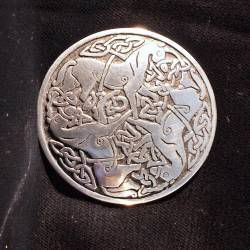 ground. Horses are sacred in Celtic lore (using the broad definition of the Celtic language group) many chieftains being buried with their prized steed along with their sword to take them to the next life.
ground. Horses are sacred in Celtic lore (using the broad definition of the Celtic language group) many chieftains being buried with their prized steed along with their sword to take them to the next life.
Often all of them buried on land, in a boat !
Horses were making these moves before the dawn of the human species, I have no doubt the same stomping move inspired stone age ancestors of early Celts to mimic it as  homage. Especially seeing as 2500 year old Celt jewellery is covered in stylised horse tributes. (Pics right)
homage. Especially seeing as 2500 year old Celt jewellery is covered in stylised horse tributes. (Pics right)
And probably why the French quadrilles were adored. They were first an 18th century military equestrian display with 4 horses and 4 people. Later it became 4 pairs of humans, but the horse move remains a feature. Even the clogging rhythms sound like trotting, canter and galloping horses hooves.
A number of oldskool shufflers were actually known for their great dancing horse like shuffle moves.
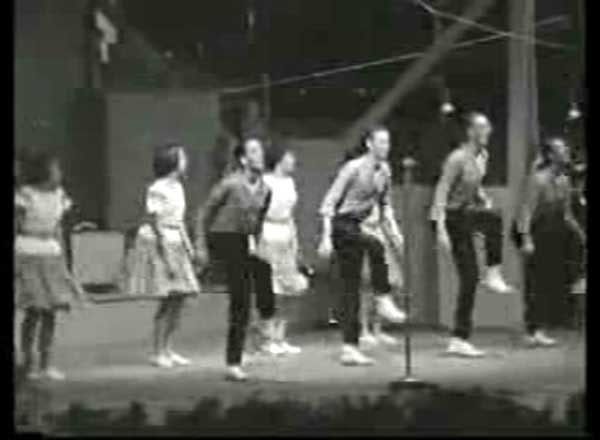
Clog stomping is the basis for Hardstyle Shuffling today. It appears to be an ancient mimic-move homage to horses. Horses were sacred in very early Celtic cultures.
Variations of clogging spread to different regions by the sailors when they were in port, often combining with local folk dance traditions over time to form Irish dance, Scottish dance and Flamenco in Celtic Iberia/Spain, as we know them today. 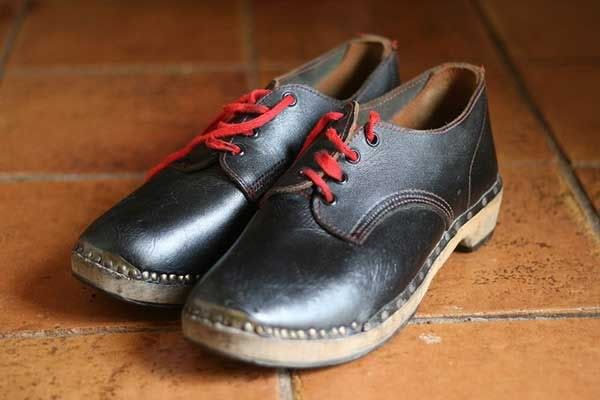 Over the centuries regional variations emerged and distinct local cultural styles developed.
Over the centuries regional variations emerged and distinct local cultural styles developed.
The full wooden clog made way for a leather top clog around the 1400's as the dance moved inland to wooden floored dance halls. They became a cheap strong footware, such as the traditional Lancashire (UK) wooden soled clog worn by 19th century industrial revolution mill workers. Who entertained themselves by syncopating foot taps with the rhythmic sounds made by the loom shuttles, creating the rhythmic foundation for Tap dance. (pic above)
During this 19th century England, clog dancing competitions were held and there were professional clog dancers who performed in the music halls.
Clogging was taken by Irish, Scot, Welsh and English immigrants to the new city of New York, where it combined with African-American culture and evolved into Tap ...despite racial segregation laws of the time forbidding either cultures associating with each other.
In the 1920's these racist attitudes led to dance being banned in New York City, along with alcohol. It was the prohibition era. The ban on alcohol was lifted pretty quickly, but despite protests and high court trials, the ban on dancing remains to this day...and yet the dance lives on. 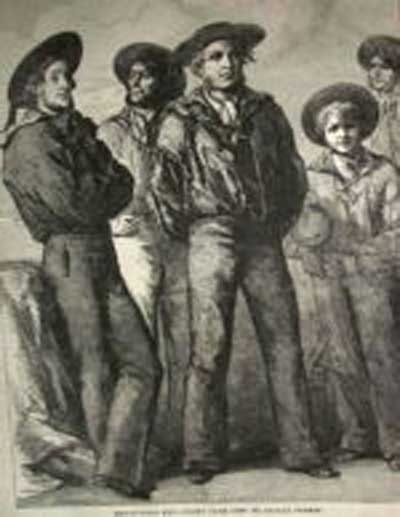
It wasn't just moves that we inherited from the Sailors. We can thank them for Phats as well.
Melbourne Shuffle Phats are based on traditional sailors bell-bottom pants.
 The large cuff size of the pants made them easy to roll up to the knee, so they didn't get wet working on deck or wading to shore.
The large cuff size of the pants made them easy to roll up to the knee, so they didn't get wet working on deck or wading to shore.
They were also great to Stomp in
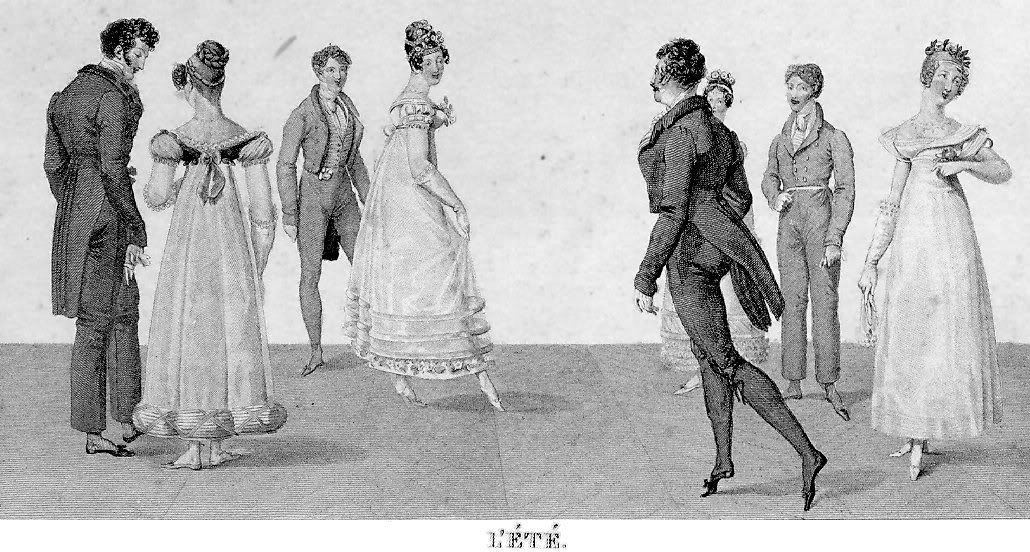 were first an 18th century military equestrian display with 4 horses and 4 people.
were first an 18th century military equestrian display with 4 horses and 4 people. It was adapted for French court culture mid 1700's with 4 human couples, horses not included. Typically known as barn dancing or square dancing, because you start in a square formation.
Blue Ridge Mountain Dancers with Pete Seeger



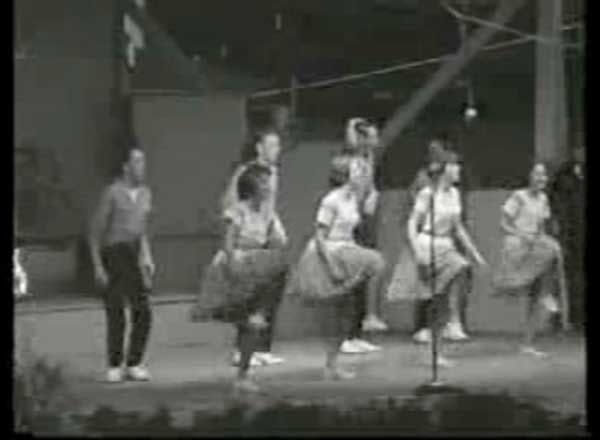

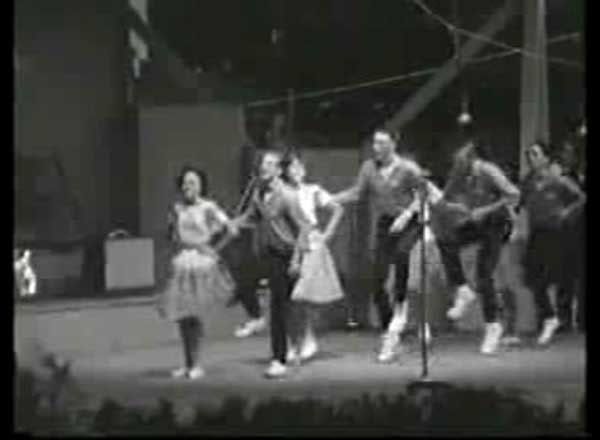
Check out the dance halfway through this Cuban band from the 50's called orquesta aragon - classic shuffle!
ReplyDeletehttp://www.youtube.com/watch?v=ZNV3vSPnNcM